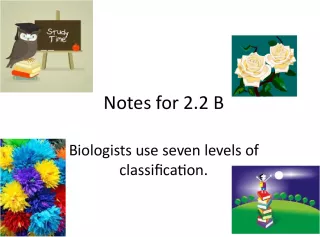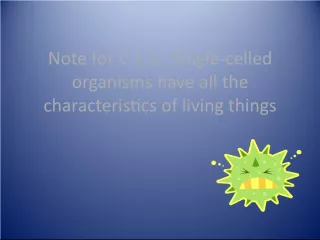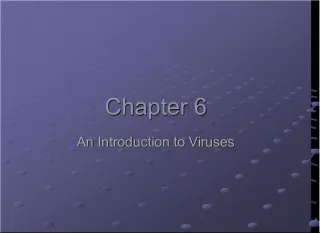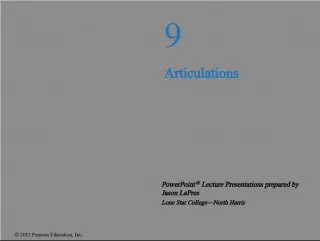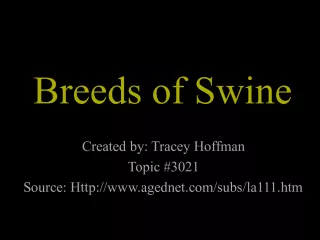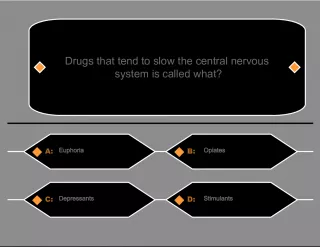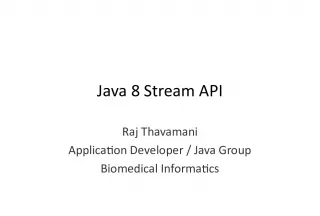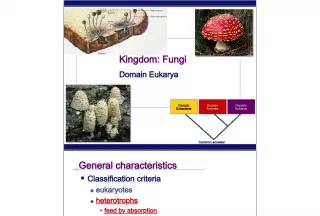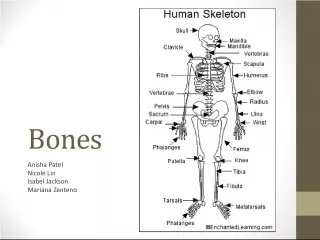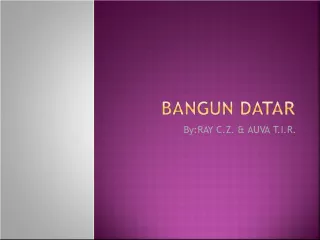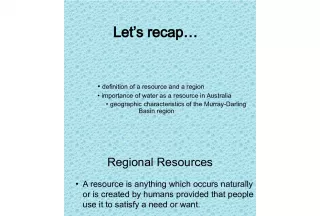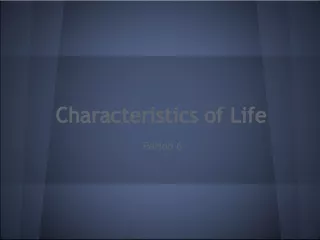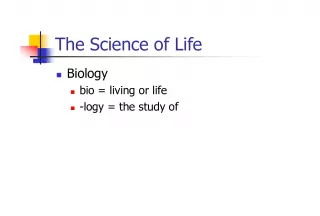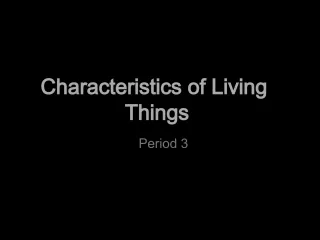Overview of Fishes: Common Characteristics and Classification


This article provides an overview of the common characteristics of fishes, such as bilateral symmetry, fins, gills to breathe, and an endoskeleton with a backbone. It also discusses the three classes of fishes: Agnatha, Chondrichthyes, and Osteichthyes, with their respective number of species.
- Uploaded on | 5 Views
-
 calliope
calliope
About Overview of Fishes: Common Characteristics and Classification
PowerPoint presentation about 'Overview of Fishes: Common Characteristics and Classification'. This presentation describes the topic on This article provides an overview of the common characteristics of fishes, such as bilateral symmetry, fins, gills to breathe, and an endoskeleton with a backbone. It also discusses the three classes of fishes: Agnatha, Chondrichthyes, and Osteichthyes, with their respective number of species.. The key topics included in this slideshow are fishes, common characteristics, bilateral symmetry, fins, gills, endoskeleton, Agnatha, Chondrichthyes, Osteichthyes,. Download this presentation absolutely free.
Presentation Transcript
1. Fishes Fishes
2. Common Characteristics Common Characteristics Bilateral Symmetry Fins Gills to breathe Endoskeleton with backbone Bilateral Symmetry Fins Gills to breathe Endoskeleton with backbone
3. 3 Classes 3 Classes Agnatha ~60+ species Chondrichthyes ~850 species Osteichthyes ~20,000+ species Agnatha ~60+ species Chondrichthyes ~850 species Osteichthyes ~20,000+ species
4. Agnatha - Jawless Fish Agnatha - Jawless Fish
5. Agnatha - Jawless Fish Agnatha - Jawless Fish No Jaw Long bodies No scales Cartilage skeleton One fleshy fin No swim bladder No Jaw Long bodies No scales Cartilage skeleton One fleshy fin No swim bladder
6. Agnatha: Hagfish Agnatha: Hagfish Scavenger Feed on dead/dying fish (or whales!) Drill hole and suck blood and flesh hagfish
8. Agnatha: Lamprey Agnatha: Lamprey Many parasitic Attach with sucker-like mouth Teeth scrape flesh or suck blood Many parasitic Attach with sucker-like mouth Teeth scrape flesh or suck blood
9. Chondrichthyes - Cartilaginous fish Chondrichthyes - Cartilaginous fish
10. Chondrichthyes - Cartilaginous fish Chondrichthyes - Cartilaginous fish Sharks, skates, and rays Well-developed fins(paired) Cartilage skeleton No swim bladder Eat anything (almost) Sharks, skates, and rays Well-developed fins(paired) Cartilage skeleton No swim bladder Eat anything (almost)
11. Chondrichthyes - Cartilaginous fish Chondrichthyes - Cartilaginous fish Skates and rays Mouth on underside Flap wings May have sharp spines with poison glands on tail Some generate electricity Skates and rays Mouth on underside Flap wings May have sharp spines with poison glands on tail Some generate electricity
12. Tiny, toothlike scales called denticles or placoid scales on sharks
13. Osteichthyes - Bony Fish Osteichthyes - Bony Fish
14. Osteichthyes - Bony Fish Osteichthyes - Bony Fish Endoskeleton of bone Scales - Ctenoid Swim bladder Gill covers - Operculum Endoskeleton of bone Scales - Ctenoid Swim bladder Gill covers - Operculum
15. Osteichthyes - Bony Fish Osteichthyes - Bony Fish 3 groups 1. Lobe-finned (7 living sp.) 2. Lung fish - gills and lungs to gulp air 3. Ray-finned - diverse 3 groups 1. Lobe-finned (7 living sp.) 2. Lung fish - gills and lungs to gulp air 3. Ray-finned - diverse
16. Shape and Movement Shape and Movement Pelvic and Pectoral- stablizers for turning, stopping Dorsal - stablize fish so doesnt flip Caudal - main thrust for swimming
19. Swim Bladder in bony fish Swim Bladder in bony fish
20. Coloration Coloration Chromatophores (pigments) Mirror-like silver - light reflecting crystals Countershading in open ocean euphotic Counterillumination Chromatophores (pigments) Mirror-like silver - light reflecting crystals Countershading in open ocean euphotic Counterillumination
21. Coloration Coloration Disruptive Disruptive
22. Coloration Coloration Camouflage Colorful Camouflage Colorful
23. Respiration Respiration
24. Respiration Respiration Gills extract oxygen and eliminate CO2 Lots of surface area- gill filaments Gills extract oxygen and eliminate CO2 Lots of surface area- gill filaments
27. Respiration Respiration Water must flow continously past gills Bony fish: operculum Sharks : water enters through mouth or spiracle Water must flow continously past gills Bony fish: operculum Sharks : water enters through mouth or spiracle
28. Excretory system - osmoregulation
29. Some water, CO2 and salt excreted through gills Kidneys remove wastes and salts
30. Bony fish: Drink saltwater Gills remove salt Dont pee much(very salty) Sharks: Blood salts similar to sea Water Retain a lot of nitrogenous Waste (urea) Gills and kidneys excrete salt
31. Circulatory system: Closed, 2 chambered heart No O2 blood from body ->atrium ->ventricle->gills to Get O2 ->body O2 used->back to heart Humans: Body to heart to lungs back to heart to body
33. Nervous System Nervous System Brain, spinal cord, excellent sense organs Large eyes Taste and smell: big olfactory sacs with receptors on head and entire body Ears: dont hear well, but have Lateral line system Brain, spinal cord, excellent sense organs Large eyes Taste and smell: big olfactory sacs with receptors on head and entire body Ears: dont hear well, but have Lateral line system
34. Nervous system
35. Pores connect to fluid-filled canals under skin Sensitive to vibrations and pressure waves Detect prey, danger, swim in schools, dark murky water
37. Digestive System Digestive System Complete digestive tract Carnivores, herbivores, scavengers, parasites, filter feeders, go fishin Shark swallow food whole, have a spiral valve to digest and absorb nutrients instead of intestines Complete digestive tract Carnivores, herbivores, scavengers, parasites, filter feeders, go fishin Shark swallow food whole, have a spiral valve to digest and absorb nutrients instead of intestines
38. Digestive system
40. Reproduction

